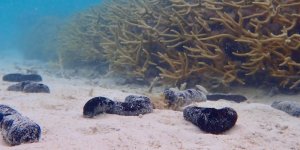| News / World News |
Microplastics, algal blooms, seafood safety are public health concerns addressed by new Oceans and Human Health Centers
To address plastics and other problems that could affect human health, the National Institutes of Health (NIH) and the U.S. National Science Foundation (NSF) are jointly funding four new Centers for Oceans and Human Health and renewing two centers as part of a marine-related health research program.

Microplastics. Photo: Sören Funk/Unsplash
Each Center will focus on a different aspect of the interplay between environmental science, climate change, and human health in the ocean or Great Lakes.
Together the two agencies plan to invest more than $42 million over five years for the centers program, continuing a two-decade long collaboration.
The National Institute of Environmental Health Sciences (NIEHS) administers the centers at the National Institutes of Health (NIH) and supports individual research projects that focus on the ocean and the Great Lakes and their impact on human health.
Millions of tons of small pieces of plastic, referred to as microplastics are finding their way into the world’s oceans.
These microplastics, ranging from the size of a width of a pencil to smaller than a sesame seed, often get eaten by fish and shellfish and are passed to humans through seafood consumption.
They also act as microscopic sponges, attracting, concentrating, and carrying pollutants into new environments.
These plastic particles and other factors, including a warming climate and more extreme weather events, are affecting the health of our waterways, and, in turn, the health of our citizens.
“We know very little about what these microplastics or even smaller pieces of plastics, known as nanoplastics, can do to human health in the short-or long-term, or even what they can do to the health of the sea turtles and other animals that live in the ocean,” said Anika Dzierlenga, Ph.D., program lead at the NIEHS.
Nanoplastics measure under one micrometer in length, the width of a spider web or virus, making it very easy for them to enter the human body through eating, breathing, and absorption through the skin.
Once inside the body, they may leach harmful chemicals that may impact development, reproduction, and immune system responses.
"The connection among ocean pollution, climate change, and human health are problems that we are only beginning to understand," said Dzierlenga.
“People rely on oceans and lakes for jobs, food, tourism, recreation. These centers will help bring researchers and community groups together to study and take action to protect public health in coastal regions and around the Great Lakes.”
YOU MAY ALSO LIKE





